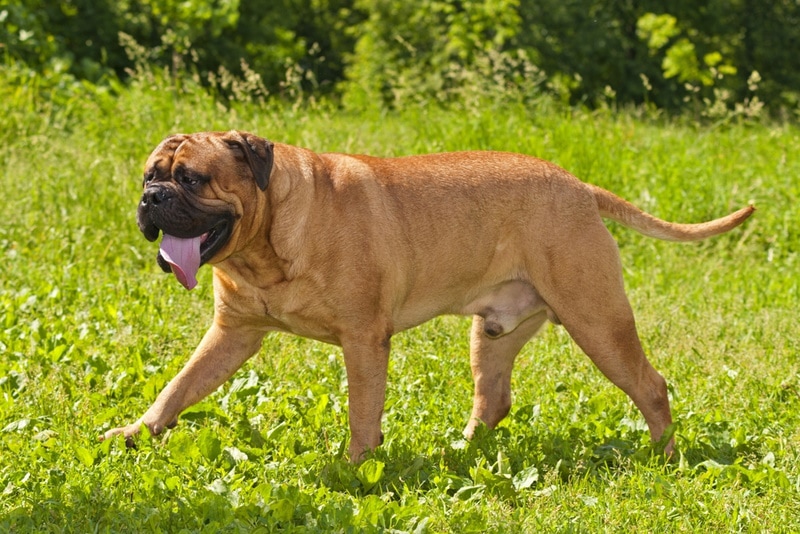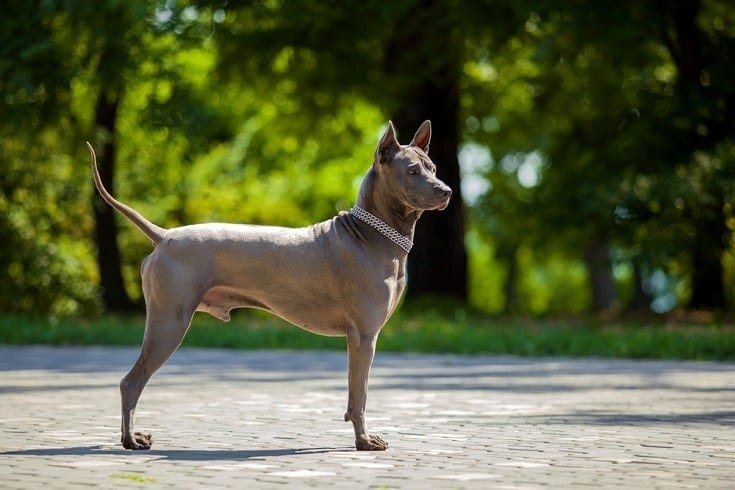How Long Do Bullmastiffs Live? Average Lifespan, Data & Care Guide
By Adam Mann
Updated on
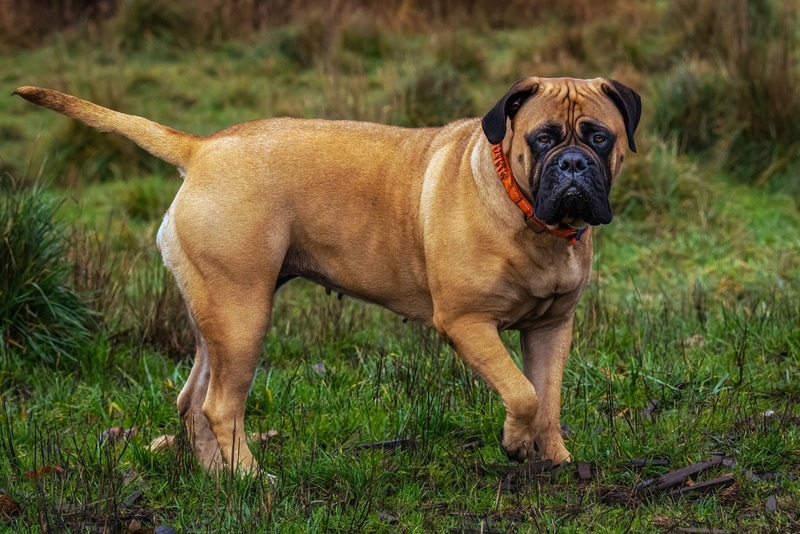
Click to Skip Ahead
If you’re looking at getting a Bullmastiff, one of the most important questions you need to answer is how long you can expect them to live. You’re signing up for quite a long commitment, and you need to ensure you’re up for meeting it throughout their entire life.
So, what is the average lifespan of a Bullmastiff, what factors affect this, and how can you tell how old they are? the average Bullmastiff only has an expected lifespan of between 7 to 9 years.
What’s the Average Lifespan of a Bullmastiff?
The Bullmastiff is a massive dog breed, and like many very large dog breeds this means they generally have a shorter lifespan.
Considering some smaller dogs can live closer to 15 years, a lifespan of just 7 years is definitely on the shorter side of things. But while a Bullmastiff’s average lifespan is between 7 and 9 years, it’s possible for them to live significantly longer, with some Bullmastiffs living between 12 and 13 years!
Why Do Some Bullmastiffs Live Longer Than Others?
While the Bullmastiff is always going to have an average shorter lifespan than smaller dog breeds, some Bullmastiffs will live longer than others. There are a ton of different factors that go into this, and we’ll highlight each one of them for you here:
1. Nutrition
Just like your diet affects what conditions you’ll develop in the future, the same is true for the Bullmastiff. If you feed them very low-quality kibble or if you don’t fully meet all their nutritional needs, it’s going to affect their overall health and lifespan.
You don’t need to purchase the most expensive dog food, but you need to give them quality dog food that meets all their nutritional needs.

2. Environment and Conditions
A happy dog in a happy home is more likely to live longer than a dog that’s in a home where they experience a ton of stress. It’s also about ensuring they get enough exercise, and their environment plays a significant role in that.
3. Enclosure Size/Living Quarters/Housing
Bullmastiffs are very large dogs, and to meet all their needs, they need larger spaces. This doesn’t mean a Bullmastiff living in a small apartment won’t live as long as one living in a larger home, but it does mean that you’ll need to ensure they get out more.
Overall, a Bullmastiff with a living space that meets all their needs is likely to live longer than one that’s living in a home that doesn’t meet all their needs.

4. Size
While size certainly plays a role in how long a Bullmastiff will live because the accepted range for these dogs only ranges from 100 to 130 pounds, it doesn’t make a huge difference overall. A smaller Bullmastiff is likely to live a little longer, but not by enough to make much of a difference.
5. Sex
While some animals have a significant difference in lifespan depending on the animals’ gender, that’s generally not the case with the Bullmastiff. They can experience gender-specific diseases, however, and spaying/neutering early on all but eliminates these risks.
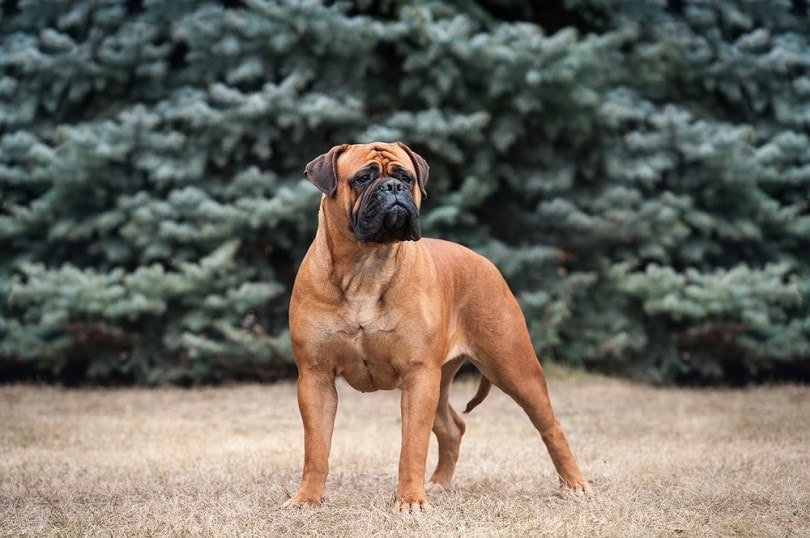
6. Genes
Genetics play a huge role in how long a Bullmastiff will live. If both parents lived a long and healthy life, there’s a good chance their offspring will too. Conversely, if the parents suffered from numerous health conditions, they’re more likely to pass those genes down as well.
7. Breeding History
This is an issue that primarily affects females since it doesn’t matter how many litters a male Bullmastiff sires when it comes to life expectancy. However, if a female Bullmastiff is constantly having litters, it can create future health problems that can negatively impact their overall health.
However, having a few litters through the years shouldn’t make much of a difference when it comes to their overall life expectancy.
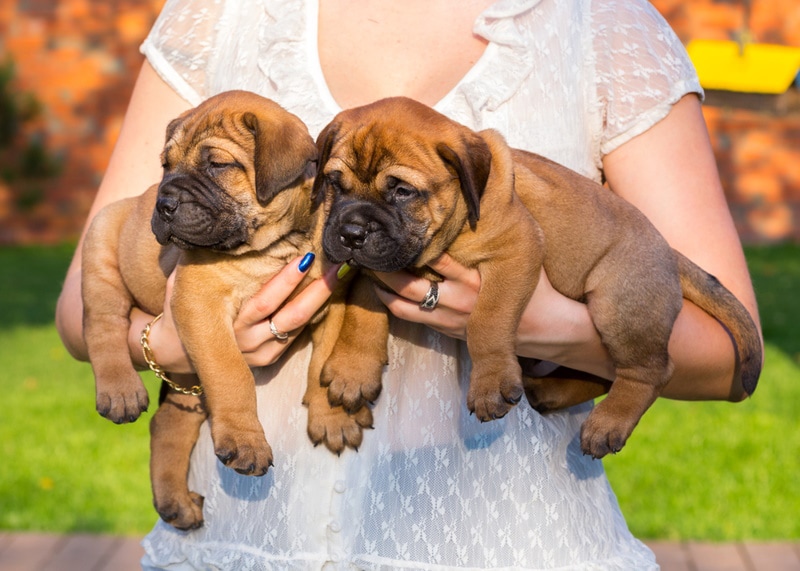
8. Healthcare
If you consistently take your Bullmastiff to the vet and ensure they get all the proper treatment for any conditions they have, they should live significantly longer than a Bullmastiff that never goes to the vet. This is one of the most important factors an owner can influence.
The 4 Life Stages of a Bullmastiff
As a Bullmastiff grows, they go through four very distinct life stages you should know about. We’ve highlighted each life stage and what you expect during each time for you here:
1. Puppy
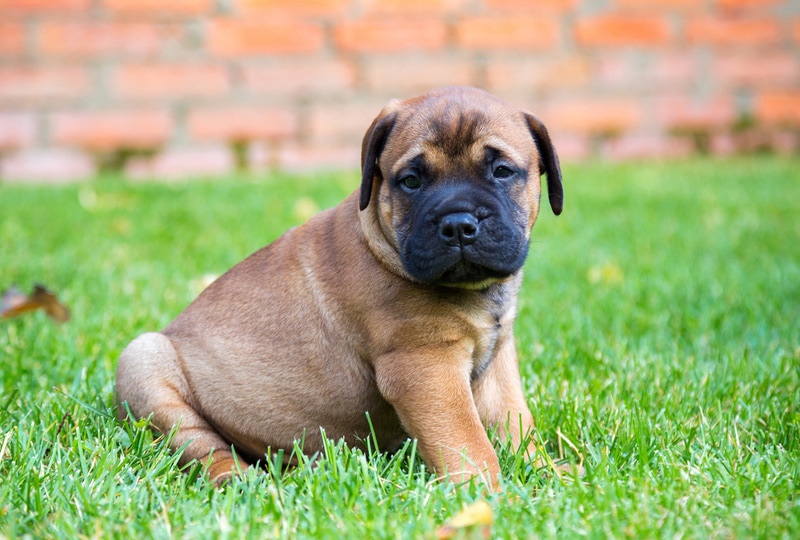
The puppy years are a time of rapid growth and development for your Bullmastiff. During this time, they are usually especially clingy but usually will do their absolute best to listen to everything you want them to do.
During the puppy years, a Bullmastiff will have higher energy levels, but they’ll also sleep a bit more compared to once they reach adulthood.
2. Adolescent

One of the most overlooked life stages of a Bullmastiff, and other dog breeds, is the adolescent stage. This stage starts between the 6th and 12th month of life, and with the Bullmastiff, it’s likely to occur towards the later portion of that time frame.
During this timeframe, a Bullmastiff undergoes major hormonal changes as the dog transitions from a puppy to an adult. Typically, a Bullmastiff will stay in adolescence until they reach 18 to 24 months old.
3. Adult

The adult stage is where a Bullmastiff will spend most of their life, and it usually occurs between the 18- to 24-month point. Once they’ve reached this stage, they’ve stopped growing completely and their hormones have balanced out.
4. Senior
Bullmastiffs reach their senior years a bit sooner than many other dog breeds, typically around the 6- to 8-year mark. During their senior years, a Bullmastiff is more likely to develop health conditions, and you’ll likely notice a dramatic drop in their activity levels.
How to Tell Your Bullmastiff’s Age
There are a few different ways you can determine a dog’s age, but only if you know what you’re looking for. One telltale sign of an older dog is graying. A Bullmastiff will often start graying around the 4- or 5-year point.
You can also use their size and teeth to determine their age, but once they get all their permanent teeth and reach their full size, this method can only tell you so much.
Finally, if you look into your dog’s eyes, you can often tell their age. As they get older, their eyes reflect less light, so if you know how much their eyes reflect light at each age, you can usually get a good estimate of how old they are! However, you might leave this to the professionals.
Conclusion
Just know that while the average lifespan of a Bullmastiff is between 7 to 9 years, it’s not unheard of for a Bullmastiff to live for 13 years or a bit more. So, if you’re thinking about bringing one home, ensure you can care for them this long, even if you’re not expecting them to live that long!
Featured Image Credit: Michael J Magee, Shutterstock


